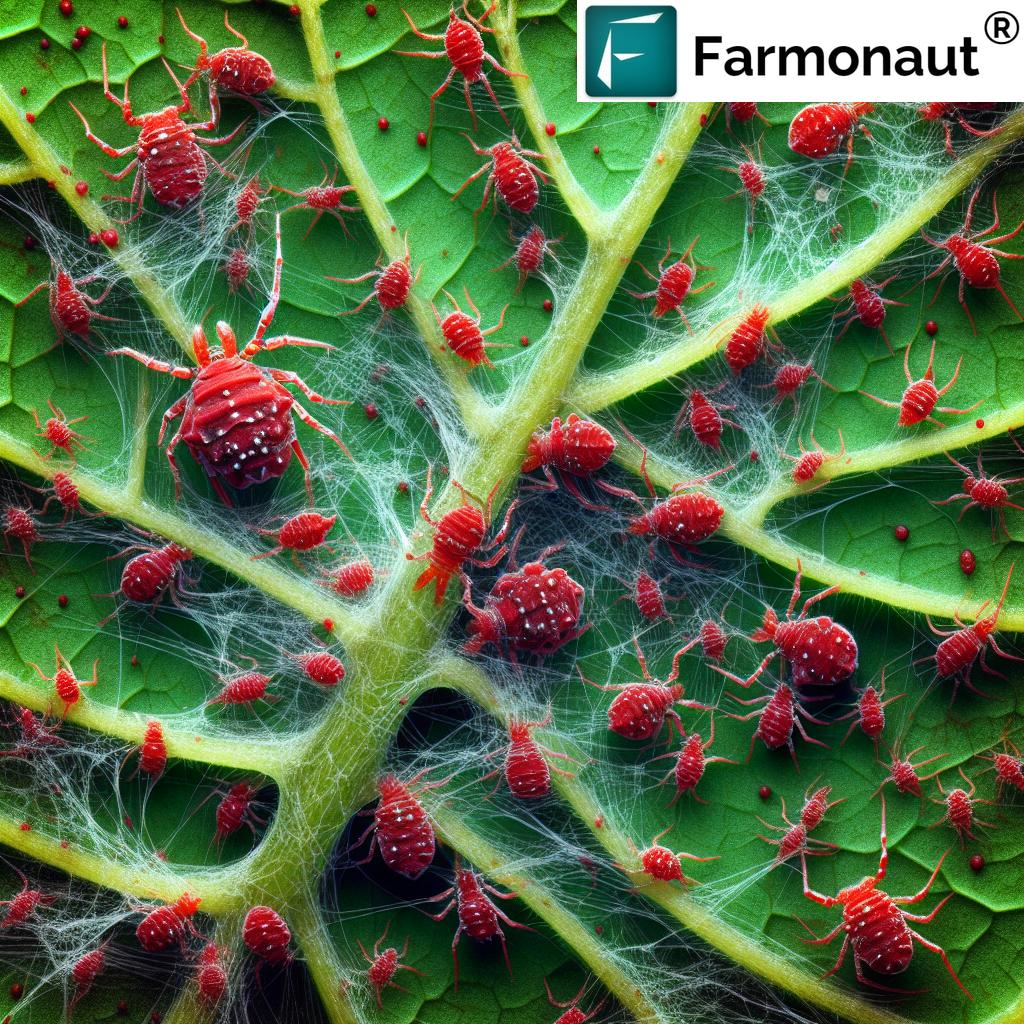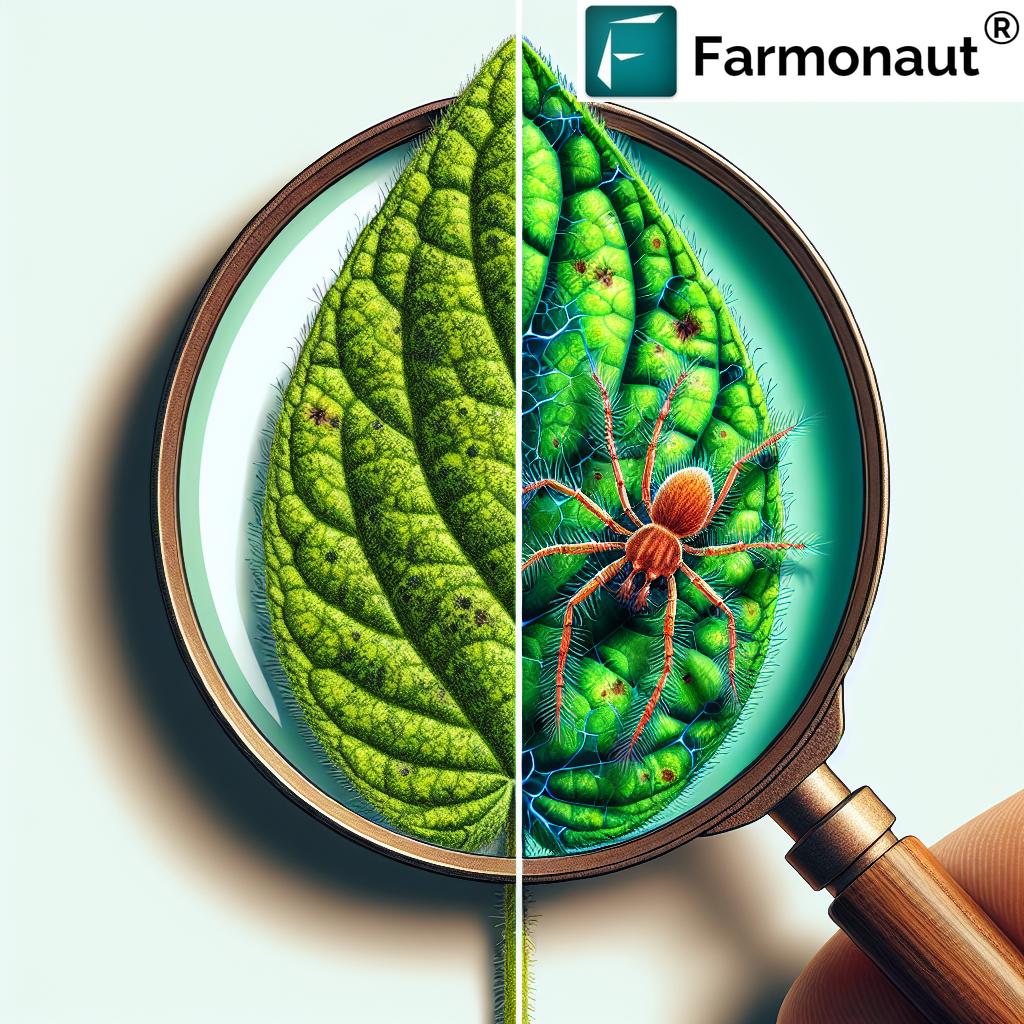Mastering Spider Mite Control: From Plant Infestation to Biological Solutions with Phytoseiulus persimilis

In the world of agriculture and gardening, few pests are as persistent and problematic as spider mites. These tiny arachnids, particularly the notorious red spider mites, can wreak havoc on a wide variety of plants, causing significant damage and economic losses. In this comprehensive guide, we’ll explore the intricacies of spider mite infestations, their life cycle, and most importantly, effective control strategies, including the use of predatory mites like Phytoseiulus persimilis.
Understanding Spider Mites: The Tiny Terrors of Plants
Spider mites are minuscule arachnids that belong to the family Tetranychidae. These pests are barely visible to the naked eye, measuring only about 0.4 mm in length. Despite their small size, they can cause extensive damage to plants, making them a significant concern for farmers, gardeners, and horticulturists alike.
Identifying Spider Mite Infestations
Recognizing a spider mite infestation early is crucial for effective control. Here are some telltale signs:
- Tiny spots or stippling on leaves
- Yellowing or bronzing of foliage
- Fine webbing on the undersides of leaves and between stems
- Leaf drop in severe cases
Spider mites typically congregate on the undersides of leaves, where they feed by piercing plant cells and sucking out the contents. This feeding activity results in the characteristic stippling effect on leaves, which can eventually lead to leaf death if left unchecked.
The Life Cycle of Spider Mites: Understanding the Enemy
To effectively control spider mites, it’s essential to understand their life cycle. These pests can complete their entire life cycle in as little as a week under optimal conditions, making them particularly challenging to manage.
Stages of the Spider Mite Life Cycle
- Eggs: Female mites lay spherical, transparent eggs on the undersides of leaves.
- Larvae: Upon hatching, the larvae are six-legged and colorless.
- Nymphs: The larvae molt into eight-legged nymphs, passing through two nymphal stages.
- Adults: Fully mature mites are typically reddish or greenish in color, depending on the species.
Under favorable conditions, such as warm temperatures and low humidity, spider mite populations can explode rapidly. A single female can lay up to 300 eggs in her lifetime, leading to exponential growth in mite populations if left unchecked.
The Spread of Spider Mites: A Silent Invasion
Spider mites are adept at spreading quickly within and between plants. They can migrate by crawling from leaf to leaf or plant to plant when foliage is in close contact. However, their most effective method of dispersal is through the air.
Wind-Borne Dispersal
Spider mites can create silk-like threads that allow them to be carried by the wind to new host plants. This method of dispersal, known as “ballooning,” enables mites to spread over considerable distances, making them a threat not just to individual plants but to entire gardens, greenhouses, and agricultural fields.

The Impact of Spider Mites on Agriculture and Horticulture
The economic impact of spider mite infestations can be substantial. In agriculture, these pests can significantly reduce crop yields and quality. In greenhouses and nurseries, spider mites can damage ornamental plants, rendering them unsaleable. Even in home gardens, these tiny arachnids can quickly devastate prized plants if not controlled promptly.
Crops Commonly Affected by Spider Mites
- Fruits: Strawberries, raspberries, and citrus
- Vegetables: Tomatoes, cucumbers, and melons
- Field crops: Cotton, soybeans, and corn
- Ornamentals: Roses, chrysanthemums, and many other flowering plants
Traditional Methods of Spider Mite Control
Historically, farmers and gardeners have relied on various methods to control spider mite infestations. While some of these methods can be effective, they often come with drawbacks or limitations.
Chemical Control
The use of pesticides has been a common approach to spider mite control. However, this method poses several challenges:
- Resistance development: Spider mites can quickly develop resistance to chemical pesticides.
- Non-target effects: Broad-spectrum pesticides can harm beneficial insects and natural predators.
- Environmental concerns: Chemical pesticides can have negative impacts on the environment and human health.
Cultural Control
Cultural practices can help prevent or mitigate spider mite infestations:
- Proper irrigation to avoid water stress
- Removal of weeds that can harbor mites
- Regular monitoring and early intervention
Mechanical Control
For small-scale infestations, mechanical methods can be effective:
- Washing plants with a strong jet of water to dislodge mites
- Pruning and destroying heavily infested plant parts
Biological Control: The Future of Spider Mite Management
In recent years, there has been a growing emphasis on biological control methods for managing spider mite populations. This approach involves using natural enemies of spider mites to keep their numbers in check.
Predatory Mites: Nature’s Spider Mite Controllers
Among the most effective biological control agents for spider mites are predatory mites. These beneficial mites feed on spider mites and their eggs, helping to reduce pest populations naturally. One of the most widely used and successful predatory mites is Phytoseiulus persimilis.
Phytoseiulus persimilis: The Spider Mite Assassin
Phytoseiulus persimilis is a specialized predator of spider mites, particularly effective against the two-spotted spider mite (Tetranychus urticae). Here’s why P. persimilis is such a powerful tool in spider mite control:
- Voracious appetite: A single P. persimilis can consume up to 20 spider mites or 30 eggs per day.
- Rapid reproduction: P. persimilis can lay up to 60 eggs in its lifetime, with a shorter life cycle than its prey.
- Efficient searching behavior: These predators are adept at locating spider mite colonies, even at low densities.
- Specificity: P. persimilis primarily feeds on spider mites, minimizing non-target effects on other beneficial insects.
Implementing Biological Control with Predatory Mites
To successfully use predatory mites like P. persimilis for spider mite control, consider the following steps:
- Early detection: Regularly monitor plants for signs of spider mite infestation.
- Timing: Introduce predatory mites at the first signs of spider mite activity.
- Release rates: Follow recommended release rates based on the severity of the infestation and the crop type.
- Environmental conditions: Ensure suitable temperature and humidity levels for predatory mite survival and reproduction.
- Compatibility: Avoid using broad-spectrum pesticides that could harm the predatory mites.
Integrated Pest Management: A Holistic Approach to Spider Mite Control
While biological control with predatory mites like P. persimilis can be highly effective, the best approach to spider mite management is often an integrated pest management (IPM) strategy. IPM combines various control methods to achieve long-term, sustainable pest management.
Components of an Effective IPM Strategy for Spider Mites
- Regular monitoring and early detection
- Use of resistant plant varieties when available
- Implementation of cultural control practices
- Biological control with predatory mites and other natural enemies
- Selective use of chemical controls when necessary, preferably with mite-specific acaricides
- Record-keeping and evaluation of control measures
Advanced Technologies in Spider Mite Detection and Control
As agriculture continues to evolve, new technologies are emerging to aid in the early detection and management of spider mite infestations. One such innovative solution is offered by Farmonaut, a leading agricultural technology company.
Farmonaut’s Satellite-Based Detection System
Farmonaut leverages advanced satellite imagery and artificial intelligence to provide early detection of pest infestations, including spider mites. This technology offers several advantages over traditional detection methods:
| Method | Detection Speed | Accuracy | Coverage Area | Cost-Effectiveness |
|---|---|---|---|---|
| Visual Inspection | Slow | Moderate | Limited | Low |
| Sticky Traps | Moderate | Moderate | Limited | Moderate |
| Farmonaut Satellite System | Fast | High | Extensive | High |
As highlighted in the table, Farmonaut’s satellite-based system offers significant advantages in terms of early detection, large-scale monitoring, and cost-efficiency for proactive mite control.
Benefits of Farmonaut’s Technology for Spider Mite Management
- Early detection of stress patterns indicative of spider mite infestations
- Large-scale monitoring capabilities, ideal for extensive agricultural operations
- Integration with other pest management strategies for a comprehensive IPM approach
- Data-driven decision-making for timely and targeted interventions
To learn more about how Farmonaut’s technology can revolutionize your pest management strategies, visit Farmonaut’s App or explore their API documentation.
Conclusion: Mastering Spider Mite Control for Healthier Plants
Spider mites may be tiny, but their impact on plants can be enormous. By understanding their life cycle, behavior, and the various control methods available, we can effectively manage these persistent pests. The integration of biological control agents like Phytoseiulus persimilis, combined with cultural practices and advanced detection technologies like those offered by Farmonaut, provides a powerful arsenal in the fight against spider mites.
As we continue to seek sustainable and environmentally friendly pest management solutions, the role of biological control and precision agriculture technologies will only grow in importance. By embracing these innovative approaches, we can protect our crops, gardens, and greenhouses from spider mite infestations while minimizing our reliance on chemical pesticides.
FAQs about Spider Mite Control
- Q: How can I tell if my plants have spider mites?
A: Look for tiny spots or stippling on leaves, fine webbing on the undersides of leaves, and yellowing or bronzing of foliage. You may also see the mites themselves, which appear as tiny moving dots on the leaf surface. - Q: Are spider mites visible to the naked eye?
A: Spider mites are very small, typically measuring about 0.4 mm in length. While they can be seen with the naked eye, a magnifying glass is often helpful for clear identification. - Q: How quickly can spider mite populations grow?
A: Under favorable conditions, spider mites can complete their life cycle in as little as a week. A single female can lay up to 300 eggs, leading to rapid population growth if left unchecked. - Q: What plants are most susceptible to spider mite infestations?
A: Spider mites can affect a wide range of plants, but some common targets include fruits like strawberries and citrus, vegetables like tomatoes and cucumbers, and ornamental plants like roses and chrysanthemums. - Q: How effective is Phytoseiulus persimilis in controlling spider mites?
A: Phytoseiulus persimilis is highly effective against spider mites, particularly the two-spotted spider mite. A single P. persimilis can consume up to 20 spider mites or 30 eggs per day, making it a powerful biological control agent. - Q: Can I use chemical pesticides alongside predatory mites?
A: It’s best to avoid broad-spectrum pesticides when using predatory mites, as these can harm the beneficial insects. If pesticides are necessary, choose mite-specific acaricides and consult with a pest management professional for compatibility. - Q: How does Farmonaut’s technology help in spider mite control?
A: Farmonaut’s satellite-based detection system uses advanced imagery and AI to provide early detection of pest infestations, including spider mites. This allows for timely interventions and more effective pest management strategies. - Q: Are there any natural home remedies for spider mite control?
A: Some home remedies include spraying plants with a mixture of water and neem oil, using insecticidal soaps, or wiping leaves with a damp cloth to remove mites. However, these methods may have limited effectiveness for large-scale infestations. - Q: How often should I monitor my plants for spider mites?
A: Regular monitoring is key to early detection. Inspect your plants at least once a week, paying close attention to the undersides of leaves where mites tend to congregate. - Q: Can spider mites develop resistance to control methods?
A: Yes, spider mites can develop resistance to chemical pesticides relatively quickly. This is one reason why integrated pest management strategies, including biological control, are becoming increasingly important.
For more information on how Farmonaut can help you manage spider mite infestations and other agricultural challenges, download our app:
Developers interested in integrating Farmonaut’s technology into their own solutions can explore our API documentation.

